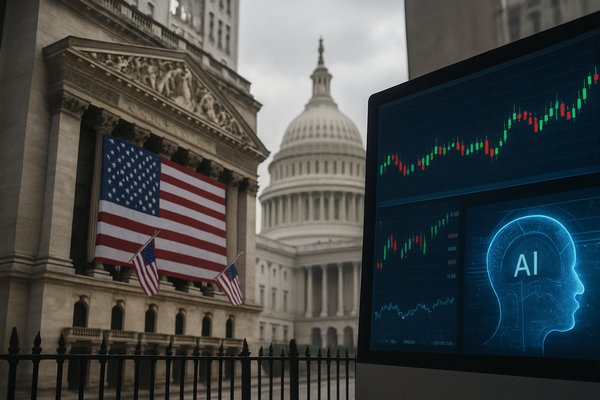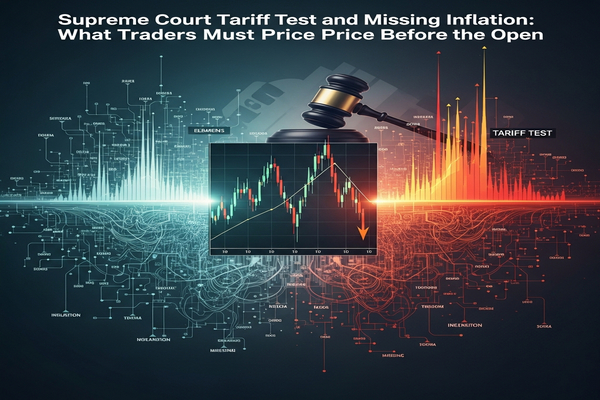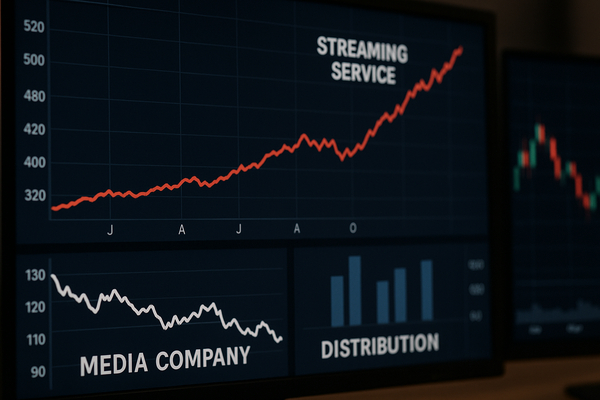
Markets closed with the S&P 500 up 0.2 percent as deal headlines and AI partnerships steered trading. Kimberly-Clark (NYSE:KMB) announced a roughly $40 billion offer for Kenvue (NYSE:KVUE) and saw its shares plunge on legal and political risk. Amazon (NASDAQ:AMZN) surged to a record high after a $38 billion cloud pact with OpenAI. Short term investors reacted to headline risk and technical flows. Longer term the moves matter for M&A scrutiny, cloud demand, and how retailers deploy AI at scale. The session also registered a global ripple from chip export signaling in Asia to media carriage fights in the U.S.
Market snapshot: quiet gains, concentrated headlines
The S&P 500 closed marginally higher as investors digested a mix of corporate news and macro signals. Trading volume reflected targeted buying in a handful of large caps while many mid and small caps lagged. Amazon led the upside after an announcement that sent its stock up 4.0 percent to a record. Amazon closed at the high after revealing a multiyear agreement to supply cloud capacity to OpenAI. That deal reinforced demand expectations for cloud services and helped lift the broader tech complex.
At the same time, the session exposed how single deals can move sentiment. Kimberly-Clark announced a bid for Kenvue that values the target near $49 billion. Kimberly-Clark shares fell 14.6 percent on the day while Kenvue rose 12.3 percent. The swing underscored how political and legal questions can quickly reprice takeover scenarios. Overall market breadth stayed narrow, with headline-driven volatility concentrated in consumer health, tech, and media names.
Deal drama at Kimberly-Clark and Kenvue
The proposed transaction between Kimberly-Clark (NYSE:KMB) and Kenvue (NYSE:KVUE) dominated the tape for consumer stocks. The deal would create a company with about $32 billion in revenue, the newsletter noted, making it the second largest health and wellness company behind Procter & Gamble (NYSE:PG). Investors punished Kimberly-Clark as the White House raised allegations around a product sold by Kenvue that the company strongly denies. That political overlay amplified legal risk and prompted questions about regulatory hurdles.
Kimberly-Clark pushed back at the market reaction. Management said it conducted extensive diligence and sought outside counsel on legal and regulatory questions. The buyer also retained two external law firms to advise on health care regulatory matters. Even so, the market treated the uncertainty as a near-term liability. In the coming days traders may reassess the suitor premium and the probability of closing. For corporate buyers, the episode highlights how reputational and political issues can eclipse traditional valuation debates.
AI deals reshape investor focus in tech and retail
AI headlines provided a second major driver. Amazon (NASDAQ:AMZN) jumped on news of a roughly $38 billion multiyear arrangement to supply cloud capacity to OpenAI. The agreement underscored the scale of cloud demand tied to generative AI workloads and served as a reminder that infrastructure providers can win long tenures of contracted capacity. That dynamic helped push Amazon to a record close and supported broader gains in cloud and data center-related stocks.
Retailers also grabbed attention. Walmart (NYSE:WMT) reiterated that AI will change roles across its workforce and said it is moving on offense with generative tools. The retailer has already provided employees access to conversational AI to pilot use cases. Those moves matter for productivity and for how companies invest in IT services and partnerships. Together the cloud deals and retail deployments suggest an acceleration of enterprise AI spending that can support capex and services revenue over multiple years.
Other movers: media fights, pharma lawsuits, and chip signals
Outside the top stories several other developments influenced sector flows. Disney (NYSE:DIS) pressed Google to restore YouTube TV access to ABC for Election Day coverage as the companies remain in a carriage dispute over network fees. That tension highlights how content negotiations can create short-term viewer risk for broadcasters and platform providers. Broadcasters watched closely given that a recent Game 7 drew an average of about 26 million viewers and a late peak above 31 million.
In health care, Pfizer (NYSE:PFE) filed a second lawsuit against Novo Nordisk (NYSE:NVO) and Metsera alleging antitrust violations in a bid to block a competing purchase. The action added legal drama to the sector on a day already heavy with acquisition headlines. Meanwhile European auto stocks rallied after reports that China may consider easing restrictions on exports from a chipmaker called Nexperia. The Netherlands recently took control of that firm. The potential shift in chip flows eased near-term supply concerns for European carmakers and lifted related equities.
At the industrial edge, a North Carolina startup called Vulcan Elements secured more than $1 billion in financing to build a rare earth magnet factory in the U.S. That deal speaks to ongoing efforts to onshore critical components and to reduce dependency on overseas supply for key manufacturing inputs.
What this session means for traders and strategists
Today reinforced a simple truth for markets. Major corporate announcements can cause outsized moves even in the absence of broad macro shifts. The S&P 500’s modest gain masked concentrated volatility in a handful of large names. Short term traders will watch legal filings, regulatory commentary, and any updates from deal parties for fresh headlines. Meanwhile, investors focused on secular trends will monitor how large cloud contracts and retail AI adoption translate into revenue for infrastructure and software providers over coming quarters.
Geographically the session carried cross-border implications. Chip export signals from Asia supported European autos. U.S. media and pharma disputes could affect global licensing and M&A outcomes. For markets that means headlines will continue to drive episodic volatility even as broader economic indicators remain steady. Risk pricing will likely depend on how quickly companies can resolve legal and carriage issues and how fast AI-related capex appears in corporate guidance.
The market closed with a mix of headline-driven repricings and pockets of durable buying. Traders and portfolio managers should track developments around the Kimberly-Clark and Kenvue transaction, the AWS and OpenAI arrangement, and the legal moves in pharma and media. Each of those threads can shape sector returns in the days ahead without changing the baseline picture for growth or inflation.








